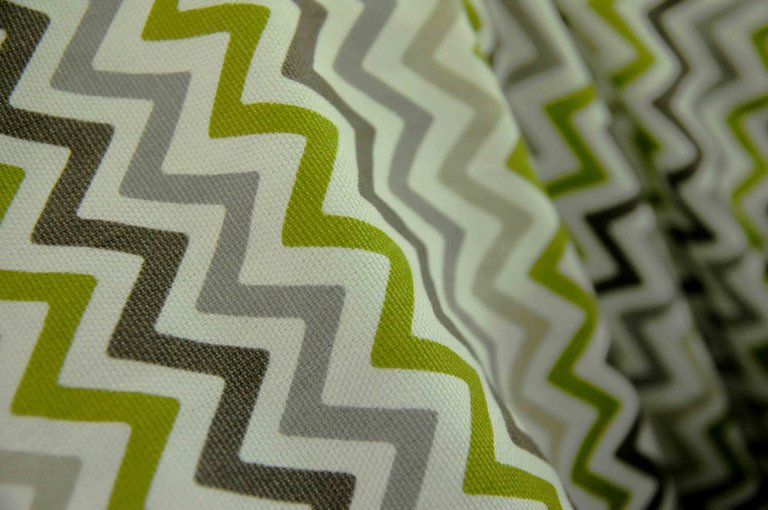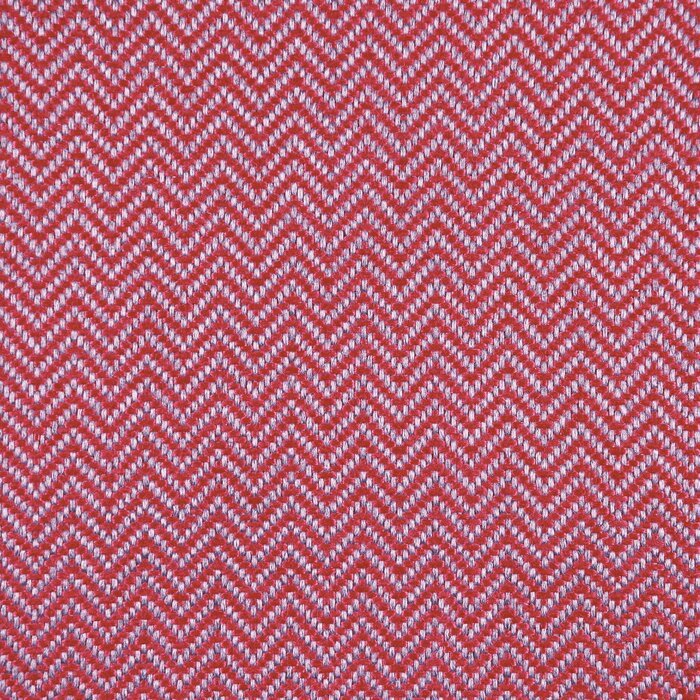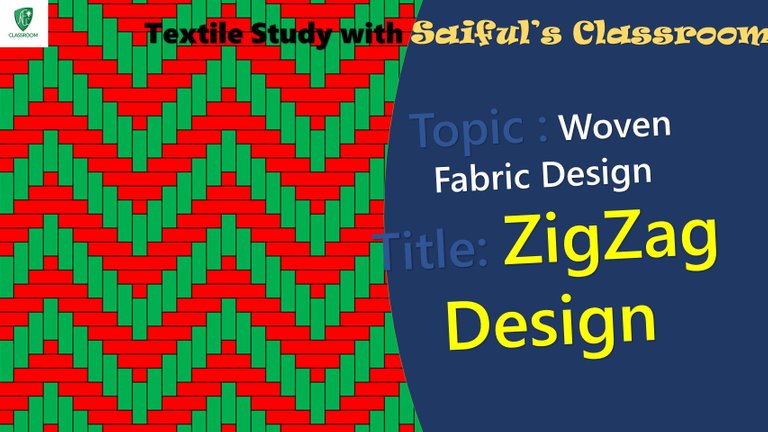
Woven Fabric Design
In Textile there are more than four types of fabric formation techniques and depending on these techniques there are different types of fabric as well. But main two techniques are Knitting (means interloping of yarn) and Weaving (means interlacing of two or more sets of yarns).
Thus, there are mainly two types of fabric.
- Woven Fabric
- Knit fabric
Woven Fabric means interlacement of two sets of yarn as you can see in the below figures.
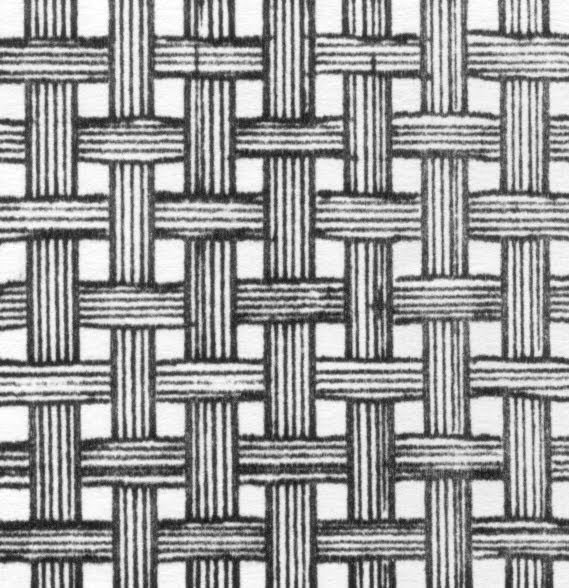
Source
So, when you will change this interlacement in different formation then you will get different kinds of fabric. This change can make the opportunity of creating variation into the fabric. So you can see some of the variations below-
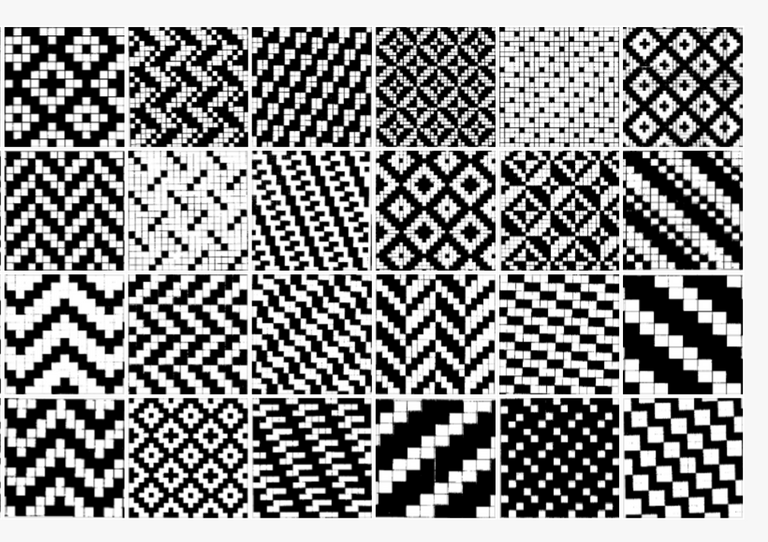
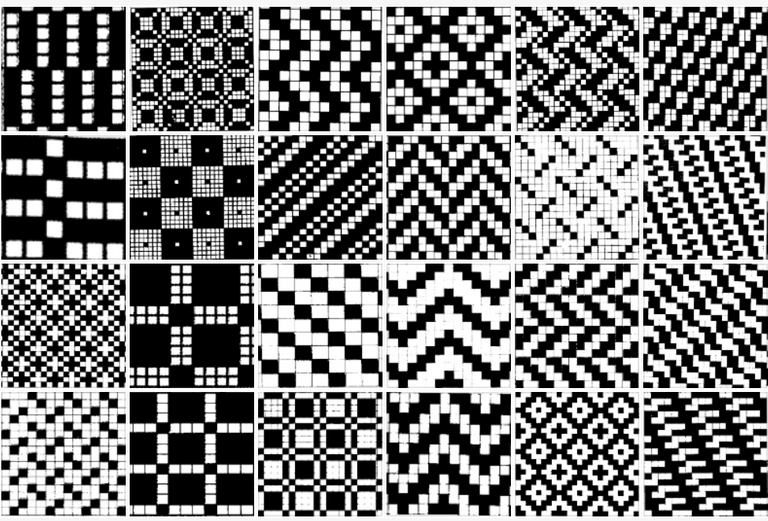
This variation is called the structure and design of woven fabric. A woven cloth is formed by the interlacement of two sets of threads, namely, warp and weft threads. The vertical lines indicate the warp yarns (a set of yarn) and horizontal line indicates the weft yarn (a set of yarn). Warp yarn basically the yarns along the length of the fabric and weft yarn means the yarns along the width of fabric. And the Bold Black or Cross sign in the cell indicates the warp yarn is up above the weft yarn and Blank cell indicates the weft yarn is up above the warp yarns. This is the general information (basic) you need to know first. Here is this blog I am going to discuss about various woven fabric design one after another.
So, let’s welcome here in this Textile Education blog with Saifuls Calssroom
Zig-zag Design
In my previous topic I have explained Diamond, Diaper, Herring Bone design. Here I am going to explain Zig-zag design. Zigzag is basically part of Diamond Design. Diamond design is based on Zigzag principle. If you divide the Diamond design then you will get a zigzag design. But the difference is here you need to repeat this half part into the whole design. Then it will be termed as zigzag or will look so. It also can be of two kinds like Horizontal and Vertical. Here I shall show you how to make the Horizontal one, then finally will show an example of Vertical one or simple straight way to convert Horizontal into Vertical. Zigzag shape is very known to all of us. And here this kind of shape will be formed finally.
The Spinal column or main bone of herring is like a zigzag shape. But Right side is opposite of left side. So from this point of view, it is that’s why called herring bone design. The main difference between Herring bone and zigzag is In herring bone, right side hands are in opposite order but In zizzag right side is of same pattern. In below figure, you can see the difference between two-

Here, I gonna show you-
- 1, how this design looks like
- 2, Sequence of working on how to form this design
- 3, Some example with sketch of this designs
- 4, Applications of this design in practical use of our day to day life
1: HOW THE DESIGN LOOKS LIKE
See the examples Zigzag design below-
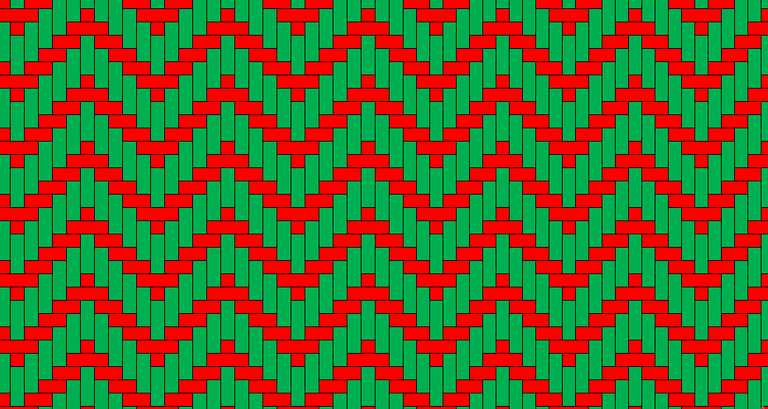
2: STEP BY STEP GUIDELINE OF HOW TO DRAW IT
You need graph paper or point paper to show the design perfectly. Here I am showing this design on Microsoft excel. You can use Microsoft excel as well. I am explaining with Microsoft Excel.
In first step we need to draw a simple twill design in the first quadrant. Here you need to take two Quadrants only. One is on left side another one is on right side. Each quadrant is taken here 55 repeat. So total repeat size is 105. So I have drawn 3/2 twill on the first quadrant.
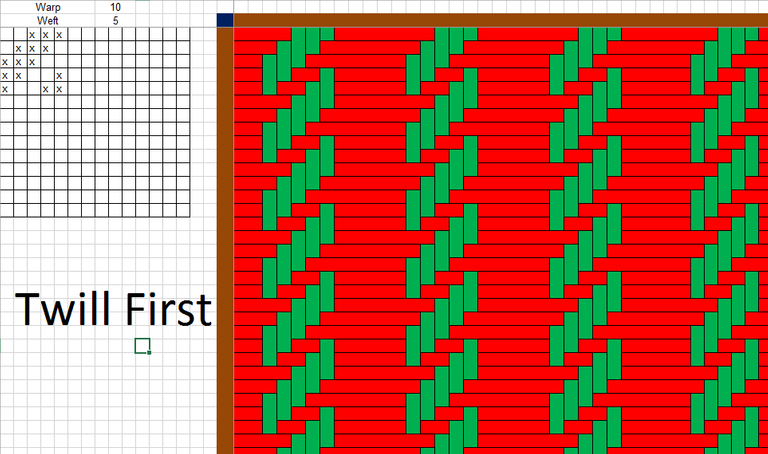
In second Step we need to write the numbering to form second part. Numbering is very simple. 1 to the highest number (here 5) then in the second quadrant start with one less than top number (here 4). Thus 1-5 then 4-1 then 5. That’s the formation. And we need to copy the that in the second quadrant is par numbering. So here, you can see the numbering and copying by reversing the x into blank then blank into x(Below Figure). For high number repeat like 12*6, the numbering will be like 1-6 then 5-1 then 6. That’s it. Simple.
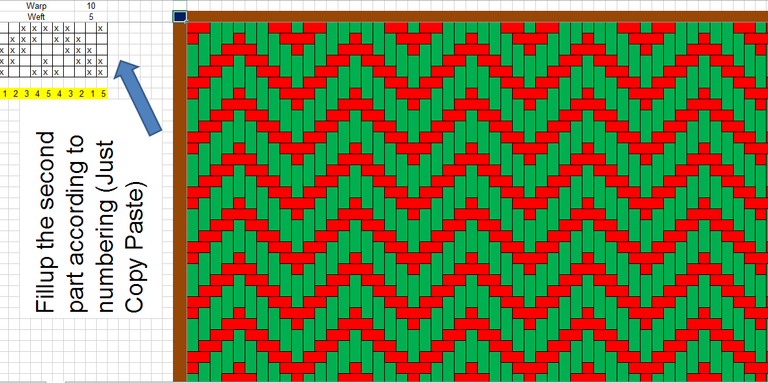
3: SOME EXAMPLES
Here are some examples of Zigzag design-
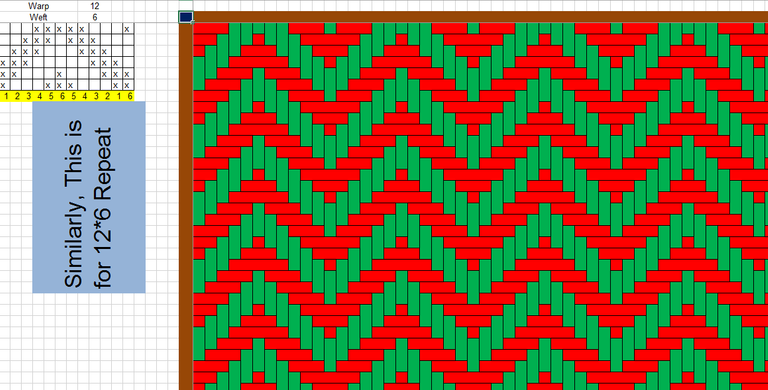
4: APPLICATION
Zigzag design has huge range of applications. Its basically used for decorative purposes. Home Textiles and Household applications are the core applications of this design. Its used in lace, tape, belt etc as well. Some example are curtain, bed sheet, shoe fabrics, bags etc. See some of those below-
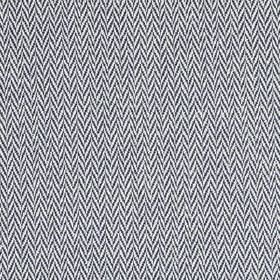
Source
Types of Zigzag Design:
Same as Herring bone design, Zigzag are of two types as I have mentioned earlier.
- Horizontal Zigzag
- Vertical Zigzag
Just rotating the Horizontal one into 90 degree the vertical zigzag can be formed or we could make it from very early stage of the process by taking two quadrants vertically and starting with S twill rather Z twill. That’s it.
N: B: I want to clarify I thing which is mistaken by new who are doing this design for the first time. This design is achieved with the interlacement of yarns not by incorporating dyes on the fabric like (dyeing or printing). If the yarn is dyed then then the design will be more prominent. And if the yarn is not dyed then the design will be achieved but will be less prominent.
Fig2
Who I am:
I am lecturer of Textile Engineering in Bangladesh and a newly married husband. I love to share my thoughts and ideas to my friends and community. I want to express whatever I have learn so far in YouTube, DTube etc. I explain Textile, Earning and Cryptocurrency related vlogs. I love to capture Natural Photography. I am always a learner and wants to make huge community here in Blockchain Technology to reach to the moon with hive.

Upvote, Resteem and Follow me on hive @engrsayful
Find me on social media
Follow me on DTube
Follow me on Youtube
Follow me on ThreeSpeak
Follow me on Facebook
Follow me on Twitter
